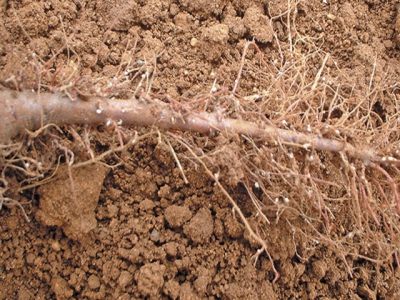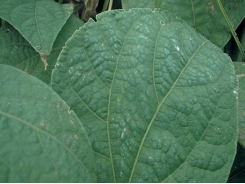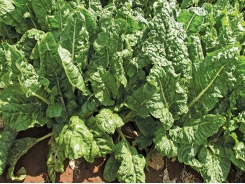Dealing with eelworm

Eelworm is generally considered the world’s worst crop pest.
A beet cyst eelworm infestation is often only apparent when the females mature and burst through the root walls, leaving white specks. Photo: Bill Kerrr
There are a number of species to contend with; the common root knot genera (Melodogyne spp.) are easy to identify as the nematode enters the root and causes a round, even swelling.
Nitrogen-fixing bacteria on legumes can also cause lumps on roots, and both types often occur together. However, the beneficial organisms cause swellings of various shapes on the sides of the roots, so you should be able to tell them apart.
Other eelworm species are more difficult to identify. For example, in the beet cyst eelworm, clear root symptoms may not be visible until the egg-laden females burst through the root walls to become visible as white specks.
In Brassica crops, this occurs only at an advanced stage of the crop’s development, by which time the damage has been done. Males and immature females remain in the root system, stunting growth.
A client who had a bad cyst eelworm problem planted oil radish as a trap crop to clear the pest. With selected varieties of oil radish, the eelworm enters the root, but the females cannot produce eggs.
One day, he phoned me in a panic to say that the oil radish was performing badly in patches, coinciding with the bad patches he had seen in his cabbages.
I explained that this was nothing to worry about. The oil radish was doing its job. Even though the cyst eelworm could not reproduce, it would still feed on the plant. The farmer did the right thing, though, by watching for poor growth areas; this is another way to identify an eelworm problem.
All plant parasitic eelworm species compromise the crop by limiting the uptake of water and nutrients. This causes stunted growth and leaves with a lighter colour that wilt when the soil is still sufficiently moist.
You will find these patches wilting in the midday sun, whereas other parts of the land are not stressed at all. Healthy, white roots will be evident in unaffected areas, but limited in affected areas.
Lesion Nematodes
The lesion nematode (Pratylenchus spp.) is another eelworm that is not all that easy to see. Even if used for a long time, oil radish will not eliminate the lesion nematode; instead, the pest will have an opportunity to build up. Symptoms then become visible as darkened and dead roots where there seems to be no other reason for this to occur.
Where cyst nematodes have been an ongoing problem, root knot and other species are not usually an issue as the chemical treatment for the cyst is an overkill for the other types.
Get it tested
Crops are particularly expensive to produce these days and any setback can be very costly.
If in doubt about what might be affecting the crop, rather have the soil analysed for the presence and population of the various eelworm species so that you can adopt the appropriate strategy in time. The ARC and various other institutions offer such services.
Related news
Tools

Phối trộn thức ăn chăn nuôi

Pha dung dịch thủy canh

Định mức cho tôm ăn

Phối trộn phân bón NPK

Xác định tỷ lệ tôm sống

Chuyển đổi đơn vị phân bón

Xác định công suất sục khí

Chuyển đổi đơn vị tôm

Tính diện tích nhà kính

Tính thể tích ao




 Crop problems: look for the clues!
Crop problems: look for the clues!  Know your spinach variants
Know your spinach variants